Chin-Agiku is a spin off the Inagiku brand by owner, Michael Chin. We were invited for a tasting at this 1 month old restaurant located in the prestigious IFC Mall at Lujiazui, Shanghai.
The motto of Chin-Agiku is making luxury affordable, which is no easy feat, being located in such an expensive area. Suffice to say, they have achieved it.
Located on the corner of LG1 level, Chin-Agiku at first glance looks like a posh Michelin 3 star restaurant. Dim lighting, artful decor, clean white table cloths. My partner and I were greeted and brought to our table briefly. Service was definitely top notch, with all of the servers greeting me by name, sure made me feel important.
Aside from providing luxurious food at affordable prices, Chin-Agiku boasts a myriad of cuisine chefs. From sashimi experts to Thai artisans to french pastry chefs and more. They have some of the top people working in the kitchens, and handling what they claim to be 100% imported ingredients.
Before we begin with the pictorial review, I would first like to apologize for the quality of the photos in this review. I had not brought my camera with me and the restaurant turned out to be much dimmer than I had anticipated for my iphone.
We were served a fantastic 8 course tasting dinner. Let us get started.
It is with great regret for me to say that Chin-agiku has shut its doors. It was good while it lasted. I wish the owner(s) all the best for their future endeavours.

First course was a salad of julienned cucumbers with tobiko (flying fish roe). This was a magnificent start to the epic meal ahead. Crisp and fresh tasting. The mayo did not feel heavy at all, and bound the crisp cucumber and roe together nicely.
As you bite into a mouthful, you first experience the crisp of the cucumbers breaking apart, and then a second crisp happens as you continue to bite into the tobiko, whose juices then burst out a rush of umami in your mouth. It was really quite spectacular, for such a simple looking dish.

For the second dish, we were presented with a pair of soups: tom yum goong and bak kut teh (a pork ribs soup originating from Singapore). The two soups were beautifully executed. The Tom yum goong had the perfect spice kick, and none of the floating spice bits that one usually loathes. No more biting into a hard piece of lemon grass in the soup. This soup has been carefully strained beforehand to avoid having lemon grass and chilli bits. The 2 prawns were fresh and we enjoyed every bit of sucking from the snipped heads. Very well made tom yum goong indeed.
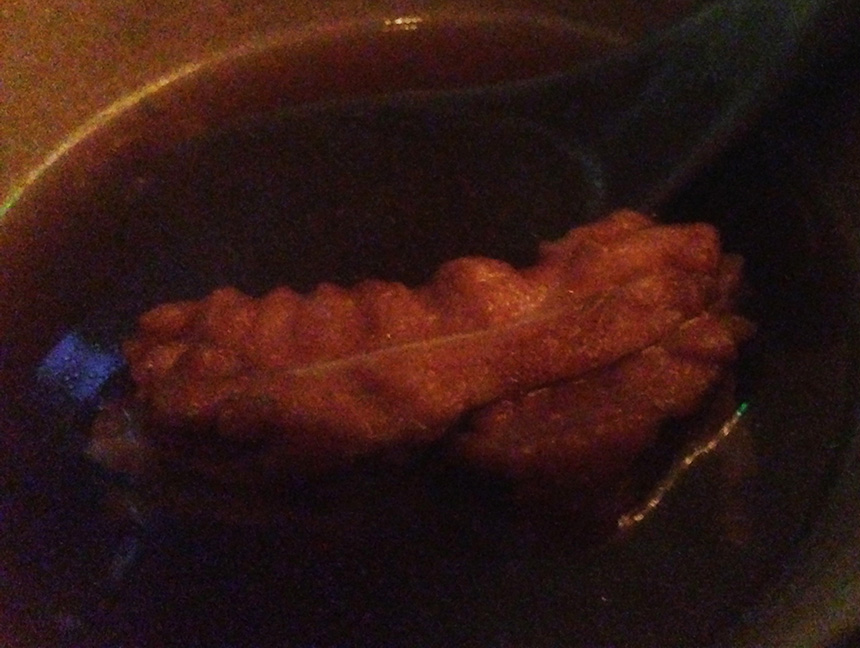
The Bak Kut Teh was good, but unfortunately coming from a Singaporean, fell short of the current standards of the other dishes. The reason I felt was due to a lack of either cooking time on the stove, or could use a little more garlic. The soup while well seasoned and spiced, lacked body. It sort of tasted like when you had a pot of soup cooking for hours, and then added another bowl of water to keep it from drying up. Having said that, it was quite remarkable for a non-Singapore specialty restaurant to produce this calibre of Bak Kut Teh. The pork ribs were organic and had a sweet undertone, no ‘porky smell’.
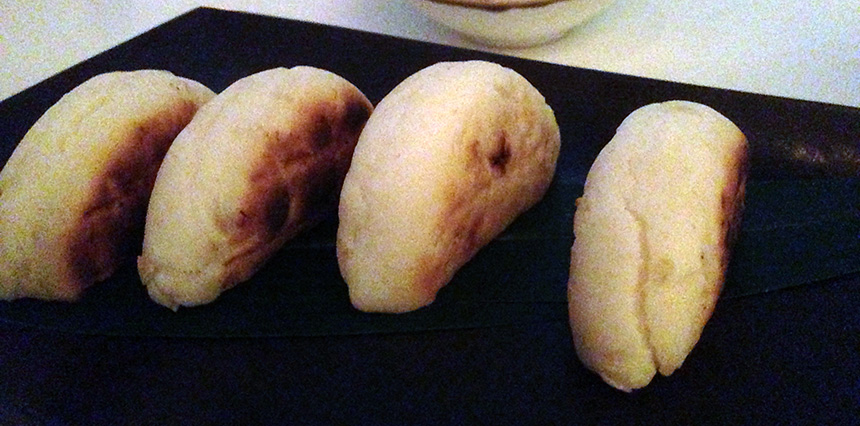
The 3rd was a japanese sticky cake. This was something new to me, and it appeared to be one of their signature dishes as I recognized the dish from their poster outside. The mouth feel was quite interesting, dry and slightly charred on the outside, but soft and gooey inside. It felt like biting into a piece of Brie cheese, which brings us to the next point. There was a cheese stuffing inside, though I couldn’t recognize the cheese, it wasn’t pungent and gave a nice savoury western twist to the japanese snack. I ended up finishing 3 of the four pieces throughout the dinner, it was really quite a mysterious little snack.

The next dish that was presented was a little departure from what was served so far. A plate of what seemed and tasted like dried cuttlefish shreds. I was told it was actually fins from some fish. It was nice tasting but I would have believed you if you told me this was something out of a packet bought at the supermarket. As I said, a little bit of a contrast with the dishes so far. I wouldn’t see myself ordering this as a dish, maybe more like a complimentary appetizer on table.
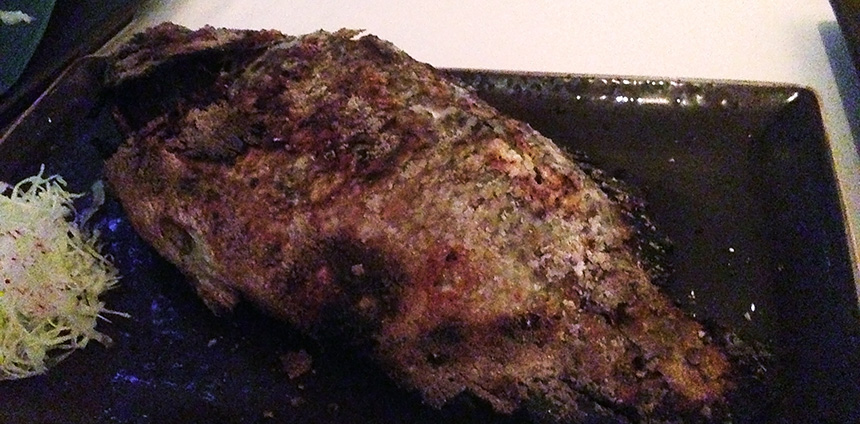
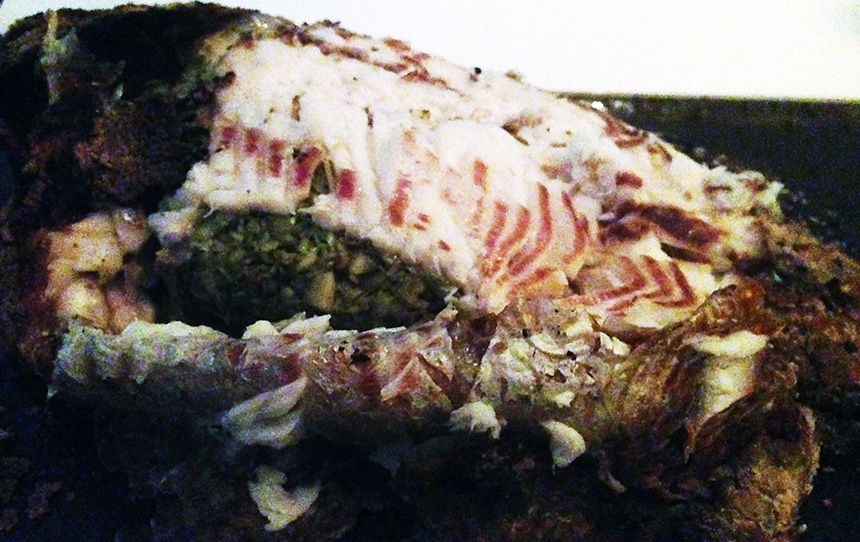
The grilled fish was next. This was carefully grilled with Binchotan, japanese white charcoal. What is special about this charcoal other than its price, is that it burns at an unusually high temperature (about 1000 degrees celsius) and does not release any smoke. This allows the ingredient to retain its original flavors without getting masked by smokiness. Now depending on the context, this could be a good and bad thing. For delicate items like unagi and fish, retaining their original flavors would be ideal. For a good ol’ American BBQ, obviously the smokiness is desired.
The fish (I forgot the name of the fish) was perfectly grilled. A nice char on the outside and crispy skin. Unfortunately the skin was not prepared to be eaten, so it had to be peeled away. I did try a piece of the skin, and it was very heavily salted, but otherwise I felt it would have been quite nice. The fish was grilled Thai style, with a lemongrass spice paste filling the cavity of the fish. Unfortunately for most of the Thai style grilled fish I’ve eated, including this one, I felt that the spice paste seldom imparted much flavour to the meat of the fish other than its immediate surrounding regions.
Having said that, the fish was cooked just nice, not overdone. Flesh was sweet, tender and broke apart easily, signifying its freshness. The texture of this particular fish’s meat was a little tough, which I felt was a pity.

Next up was sukiyaki. A very traditional japanese simmered dish, usually with thin beef slices in a shoyu broth. However the owner sat down with us when this dish arrived, and informed us that it was made using kurobuta pork. The tender pork slices were almost melt-in-the-mouth, having a very sweet flavor partly imparted from the broth. There was also a hint of smokiness within, and although I was already very full, I had to eat another slice after another. The broth instead of using japanese soy sauce, was done using singapore style soy sauce, which made it sweet without adding other sweeteners. To be honest, I would have been a happy man with just this dish and a bowl of rice.
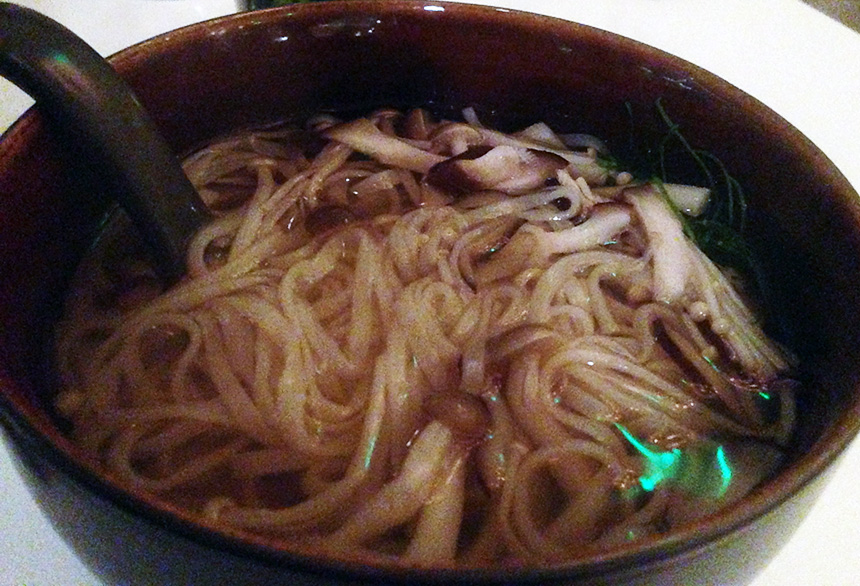
The meal concluded with a bowl of noodles, containing mushrooms. At first glance, I had thought it was vietnamese pho. Upon tasting, I realized it was flour noodles. The soup base was a japanese dashi and was very clean on the palate. This was not meant to be a very savoury dish like a shoyu based ramen/udon, but more of a means of gradually bringing the the meal to its conclusion. To be frank, it was de rigeur, nothing to shout about. A vietnamese beef pho would have been much more interesting, considering the presence of south east asian elements in the menu.
We were then served a trio of cakes, which were quite nice, but again de rigeur. The owner had told us to that we would be expecting a very popular banana cake and chocolate cake, but I think there was some confusion and we were served 3 standard layer cakes, a caramel, a lemon and a coconut.
We were absolutely bursting at the seams at this point, but really, really pleased at the quality of the meal. The prices for an average meal here for 2 would come to 500-600 RMB. Depending on what you order, it could be slightly more or less. Not exactly cheap, nor expensive at all. The food however, is without a doubt Michelin quality.
I’m looking forward to my future visits and highly recommend this exciting restaurant to your list of go-tos in Shanghai.
Total bill for 2:
Invited tasting
